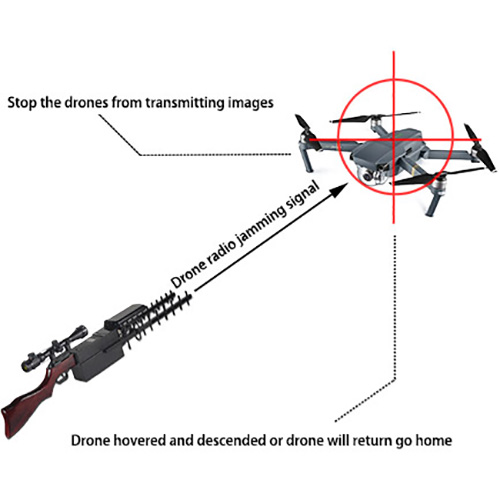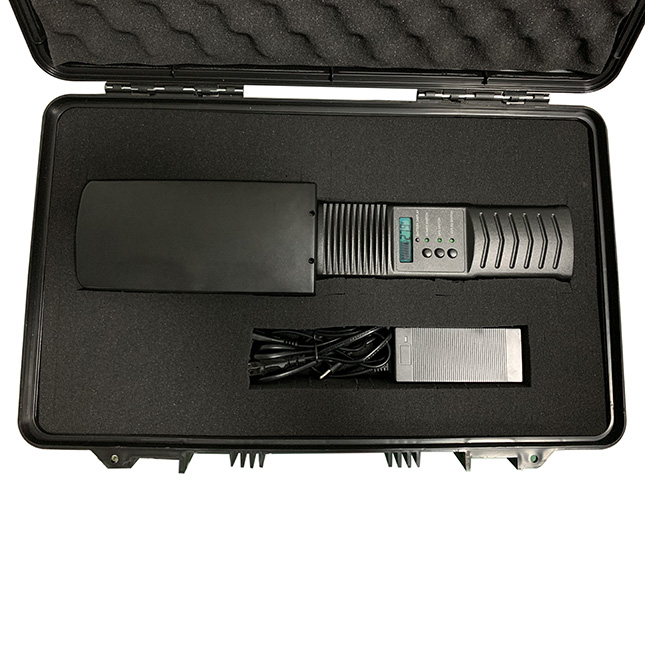With the development of the civil drone industry, the phenomenon of "black flying" of drones is serious, which has brought severe challenges to the safety of civil aviation transportation and social order. In order to ensure the safety of life and property of civil aviation passengers and the normal operation of civil aviation, and to promote the healthy and orderly development of the drone industry, the Civil Aviation Administration is actively establishing and improving the regulatory system and has issued a series of documents to guide relevant departments to carry out drone prevention work. At the same time, the Civil Aviation Administration began to actively encourage airports to use modern technological means to further improve the efficiency of airport clearance protection. However, due to the wide variety of UAV detection and drone jammer, different performances, single-use, and disparity in cost, it is difficult for the airport management department to choose more effective technical equipment to prevent the interference of UAVs the airport clearance. At present, airport anti-drone jammer technology has become a global hotspot. The following will describe the airport defense purpose, target, technology, and support means.
The category of drone "black flying"
A clear understanding of what type of drones the airport is defending against is a prerequisite for the airport to equip and use drone signal jammer technology. The nature of drone "black flight" is divided into malicious, fluke, and unintentional. Malicious "black flying" means using drones to carry out terrorist attacks on airport targets; lucky "black flying" means knowing that this place is a no-fly zone, but flying with a fluke mentality that is not easy to be detected; unintentional "black flying" means lack of legal and safety awareness, flying without knowing the no-fly zone restrictions.
Difference between military, police, and civilian drone jammer
Different drone countermeasure application subjects focus on different black flying activities. The application subjects of drone frequency jammer technology are divided into military, police, and civilian use. The purposes, goals, and means of different application subjects are different.\
Military anti-UAVs are mainly for military warfare and the defense of key military areas. In the face of all types of black flying targets, they focus on malicious attacks and focus on large-scale military UAVs with strong aggressiveness. Due to the importance of military tasks and no mistakes allowed, the equipment defense rate is required to be close to 100%, and the UAVs must be precisely attacked. The defense targets are mainly large UAVs with military attack capabilities. Most of the detection methods are mainly radar and photo electricity, which helps in precise strikes. The strike methods are also diverse, and the price factor can be ignored.
Police anti-drones are mainly aimed at key areas such as prisons, venues, and important event sites, and face all types of "black flying" targets. Based on my country's airspace management system, the main body of air targets is the Air Force. Therefore, for large-scale drone targets, malicious attacks, and other behaviors, the military and police need to be jointly disposed of. At the same time, based on the specific urban environment, the police countermeasures are mainly aimed at light targets. Small drone. In addition, because most police defense tasks are abnormally deployed, and the task environment is also complex and changeable, combined with technological development and price factors, it is required that the defense rate should be close to 90%, and the technical means should be diverse, and secondary disasters should not occur.
Civil anti-UAVs take airports as an example. The tasks of preventing UAVs in civil airports are divided into daily prevention and protection during major transportation tasks: daily prevention should focus on fluke and unintentional "black flying", and the main body of use is the airport; major task guarantees During the period of prevention, we should focus on all types of "black flying", which are mainly used by airports, public security, and other departments. It is necessary to establish a joint prevention mechanism between the army, the police, and the civilians. You can refer to police technology.

This article only analyzes the daily prevention of the airport. Since civilian airports have primary radar control equipment that can detect large UAVs, and the tower and flight crew can also identify large UAVs with the naked eye, large UAVs may not be the target of daily defense at civilian airports. In 2017, the Civil Aviation Administration of China conducted a collision test between drones and passenger planes, which verified the impact and tolerance of micro drones on flight collisions. In addition to cost, technology and other factors, micro drones may not be the target of daily airport prevention. . Therefore, the type of daily defense drones at airports is mainly light and small drones, and the equipment defense rate should be close to 80%.
Compared with military and police use, the use of drone UAV jammer equipment in airports requires all-weather power on, which requires higher reliability of the equipment. In addition, at this stage, it is impossible for the airport to send special personnel to maintain and use the equipment. Therefore, the countermeasure equipment must consider intelligence, informatization and integration, and must be able to integrate with the existing airport equipment, air traffic control equipment and information system.





